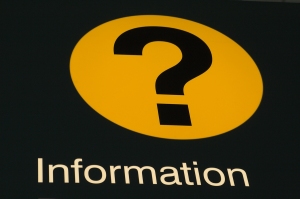Here’s a technique for clear communication that I teach writers. I first read about it in Edward Bailey’s “Plain English Approach to Business Writing.”
If you’re writing an email or an essay or whatever, and you have an opinion to express, a recommendation to make, or a request of the reader, put it right up front and use the rest of the piece to explain it. Why?
Readers want to know how a piece of writing relates to them. If you don’t tell them right away — in the first paragraph or two or three — they’ll scan what you’ve written to find it. Make sense?
If I sent you an email that began, “How are you? I was in Manhattan the other day, eating at a Mexican place in the theater district, and I saw a friend I hadn’t seen in twenty years. His name is Jake, and he’s a lawyer. So we started talking about old times, and something he said triggered a memory from when we were in high school . . .,” you’d probably grow antsy.
If I kept my narrative going, you’d start skipping and looking for how this story relates to you. When you found how it related to you, you’d relax (“Ah, Mark found a potential client for me, and wants to set up a meeting”).
Often, writers are scared to say what they need to say up front, because they think the reader will make an instant judgment, and then won’t read the justification that follows. Really, though, if the writer doesn’t tell the reader how a piece relates to them right off, the reader will skip the writer’s carefully forged prose anyway, until they found what’s being asked of them.
In my writing, I use this “put what you have to say up front” technique much of the time. Sometimes, though, I forget to start my draft with it and, instead, add it later. An example: when I wrote my “Fascination Factor” proposal for Change This.
I was reading over what I thought to be the finished proposal when I realized it wasn’t working. Too much build up. I hadn’t gotten to “the big idea” quickly enough. Readers would have to wade through 250 words before they knew what my manifesto would teach them. Rather than rewriting the whole thing, I added this paragraph to the beginning:
“My proposed manifesto, ‘The Fascination Factor,’ teaches businesspeople how to write books and other thought leadership pieces that are uniquely their own and of considerable value to readers.”
Boom! Once people understood what it was they were about to read and how it could help them, then they could settle down and see if the rest of the proposal substantiated or detracted from my claim.
Don’t think you need to begin all your communications with your main point. No need to be robotic.
But put yourself in your reader’s shoes. Look over your last piece of writing, and ask yourself, “Where do I make my main point? Where does the reader learn why he or she is reading what I wrote?” If you didn’t get to your big idea in the first few paragraphs, think about how the piece might change if you did.

Hi Mark,
“Readers want to know how a piece of writing relates to them. If you don’t tell them right away — in the first paragraph or two or three — they’ll scan what you’ve written to find it. Make sense?”
This was a great riff (and great reminder!) on prioritizing our communications.
Here’s a technique I use when emailing.
“There are three things we might consider doing for our presentation next week:
1. ——
2. —–
3. —– ”
Then either end the email or go into each point individually. Go ahead and see if it works for you.
Yup. Get that “Big Idea” up front so you grab attention right away!
Great tip. In effect you’re beginning your email with a mini Table of Contents.
By laying out and labeling the information like that, you’re taking control of the communication. The reader is more likely to understand what’s important, and is less likely to skip a key point.
Thanks again, Director Tom.